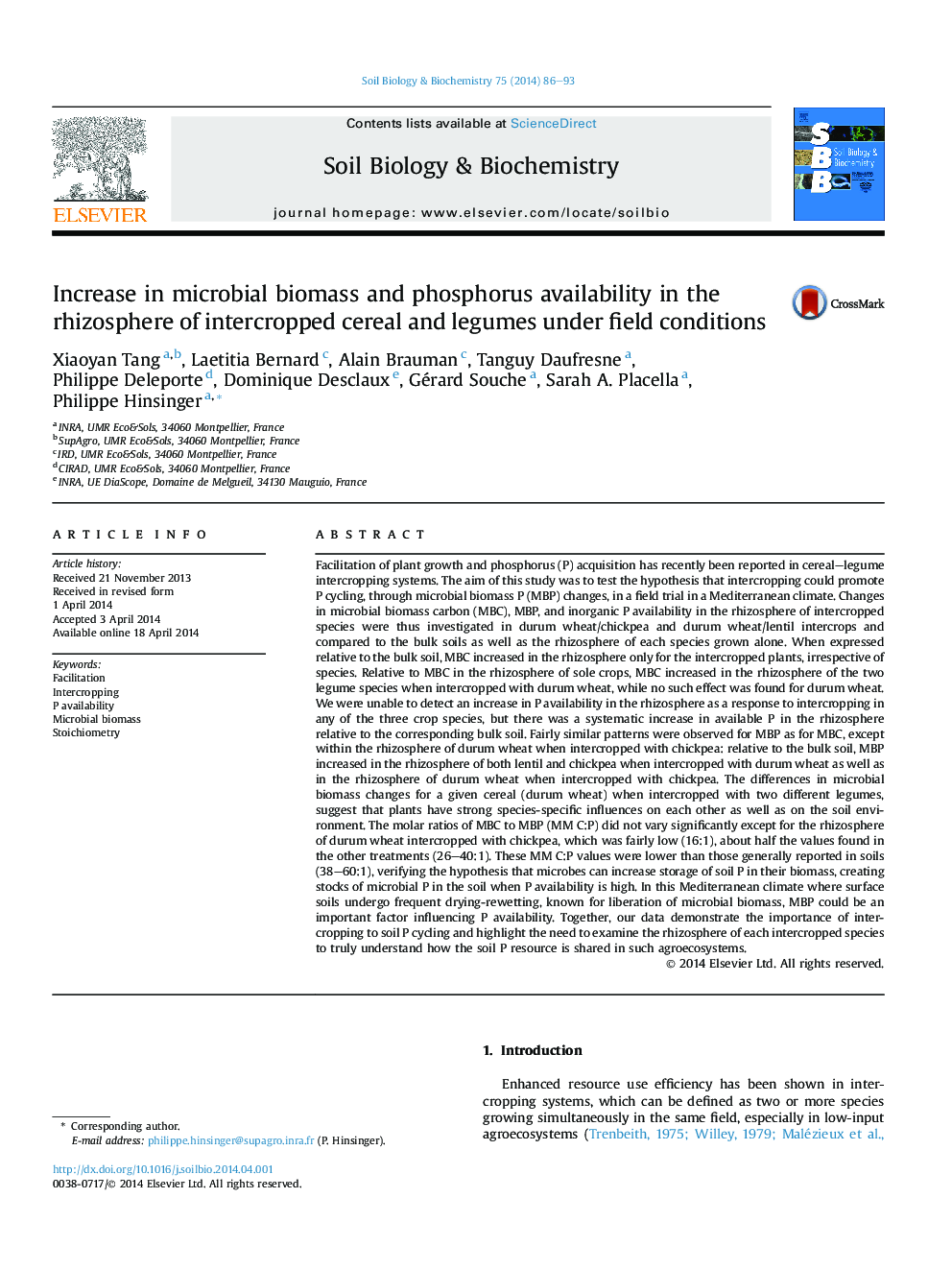| کد مقاله | کد نشریه | سال انتشار | مقاله انگلیسی | نسخه تمام متن |
|---|---|---|---|---|
| 8364700 | 1542609 | 2014 | 8 صفحه PDF | دانلود رایگان |
عنوان انگلیسی مقاله ISI
Increase in microbial biomass and phosphorus availability in the rhizosphere of intercropped cereal and legumes under field conditions
ترجمه فارسی عنوان
افزایش میزان بیوماس میکروبی و فسفر موجود در ریزوسفر غلات و حبوبات میان مخلوط در شرایط مزرعه
دانلود مقاله + سفارش ترجمه
دانلود مقاله ISI انگلیسی
رایگان برای ایرانیان
کلمات کلیدی
موضوعات مرتبط
علوم زیستی و بیوفناوری
علوم کشاورزی و بیولوژیک
دانش خاک شناسی
چکیده انگلیسی
Facilitation of plant growth and phosphorus (P) acquisition has recently been reported in cereal-legume intercropping systems. The aim of this study was to test the hypothesis that intercropping could promote P cycling, through microbial biomass P (MBP) changes, in a field trial in a Mediterranean climate. Changes in microbial biomass carbon (MBC), MBP, and inorganic P availability in the rhizosphere of intercropped species were thus investigated in durum wheat/chickpea and durum wheat/lentil intercrops and compared to the bulk soils as well as the rhizosphere of each species grown alone. When expressed relative to the bulk soil, MBC increased in the rhizosphere only for the intercropped plants, irrespective of species. Relative to MBC in the rhizosphere of sole crops, MBC increased in the rhizosphere of the two legume species when intercropped with durum wheat, while no such effect was found for durum wheat. We were unable to detect an increase in P availability in the rhizosphere as a response to intercropping in any of the three crop species, but there was a systematic increase in available P in the rhizosphere relative to the corresponding bulk soil. Fairly similar patterns were observed for MBP as for MBC, except within the rhizosphere of durum wheat when intercropped with chickpea: relative to the bulk soil, MBP increased in the rhizosphere of both lentil and chickpea when intercropped with durum wheat as well as in the rhizosphere of durum wheat when intercropped with chickpea. The differences in microbial biomass changes for a given cereal (durum wheat) when intercropped with two different legumes, suggest that plants have strong species-specific influences on each other as well as on the soil environment. The molar ratios of MBC to MBP (MM C:P) did not vary significantly except for the rhizosphere of durum wheat intercropped with chickpea, which was fairly low (16:1), about half the values found in the other treatments (26-40:1). These MM C:P values were lower than those generally reported in soils (38-60:1), verifying the hypothesis that microbes can increase storage of soil P in their biomass, creating stocks of microbial P in the soil when P availability is high. In this Mediterranean climate where surface soils undergo frequent drying-rewetting, known for liberation of microbial biomass, MBP could be an important factor influencing P availability. Together, our data demonstrate the importance of intercropping to soil P cycling and highlight the need to examine the rhizosphere of each intercropped species to truly understand how the soil P resource is shared in such agroecosystems.
ناشر
Database: Elsevier - ScienceDirect (ساینس دایرکت)
Journal: Soil Biology and Biochemistry - Volume 75, August 2014, Pages 86-93
Journal: Soil Biology and Biochemistry - Volume 75, August 2014, Pages 86-93
نویسندگان
Xiaoyan Tang, Laetitia Bernard, Alain Brauman, Tanguy Daufresne, Philippe Deleporte, Dominique Desclaux, Gérard Souche, Sarah A. Placella, Philippe Hinsinger,
